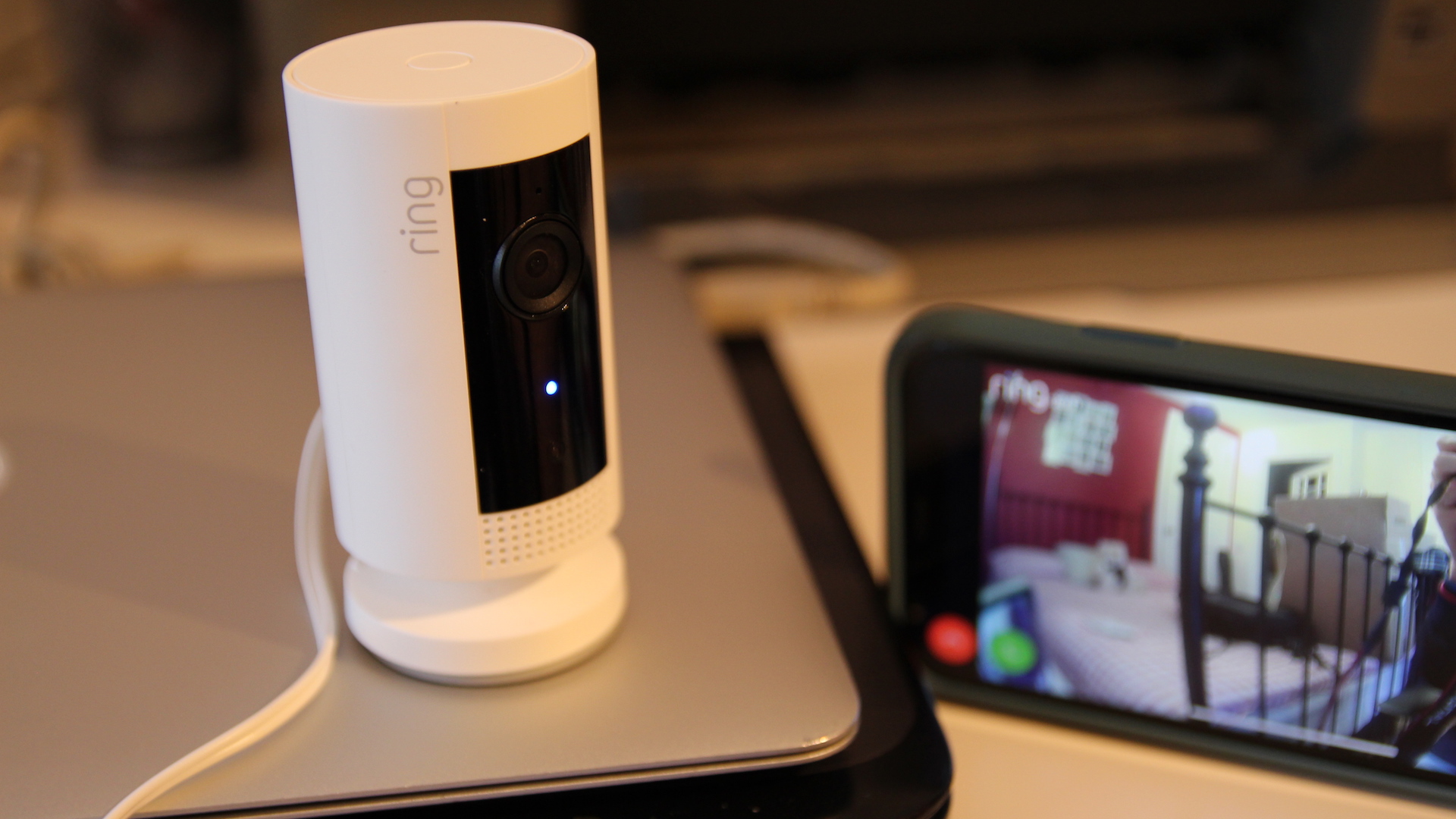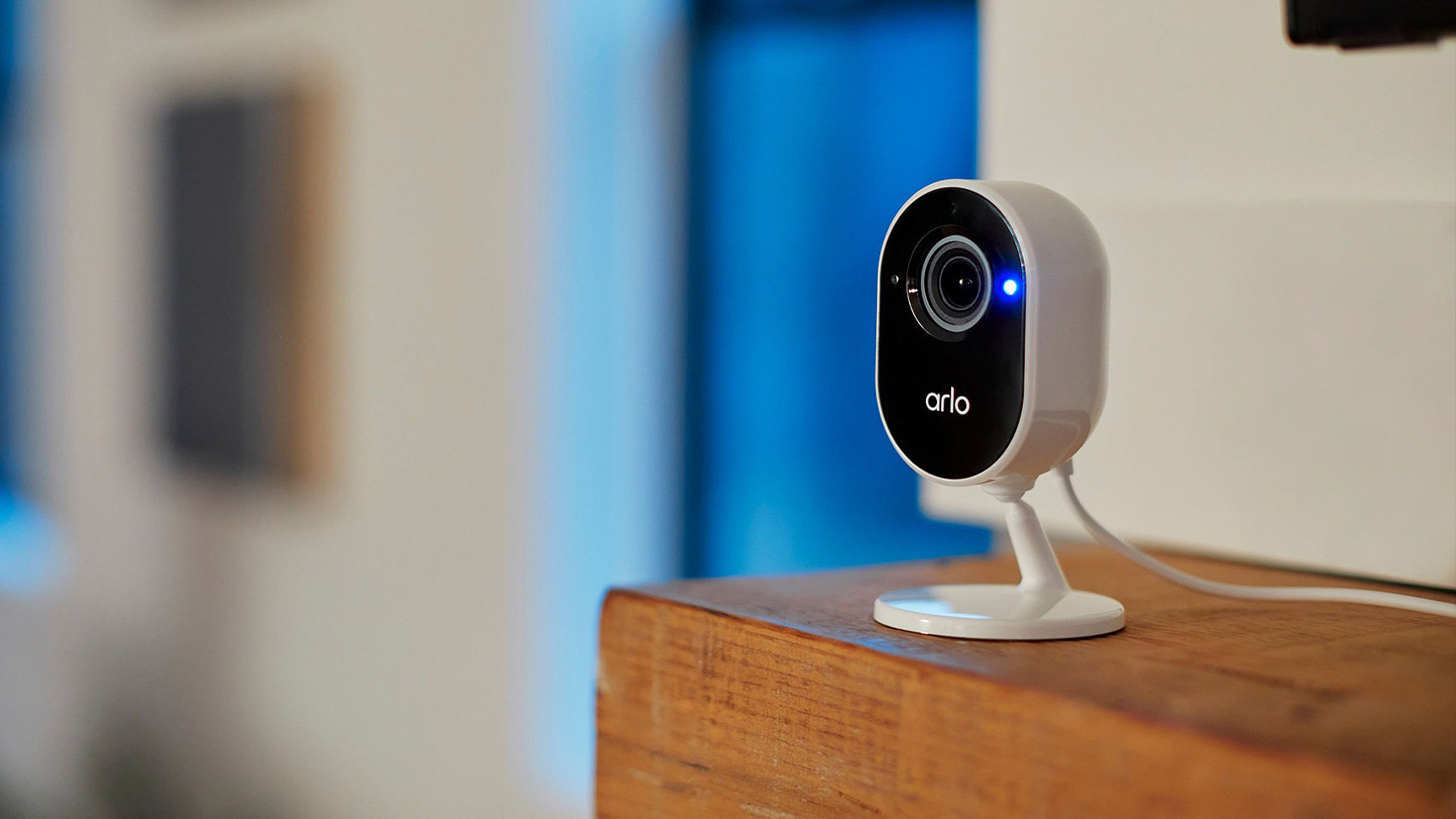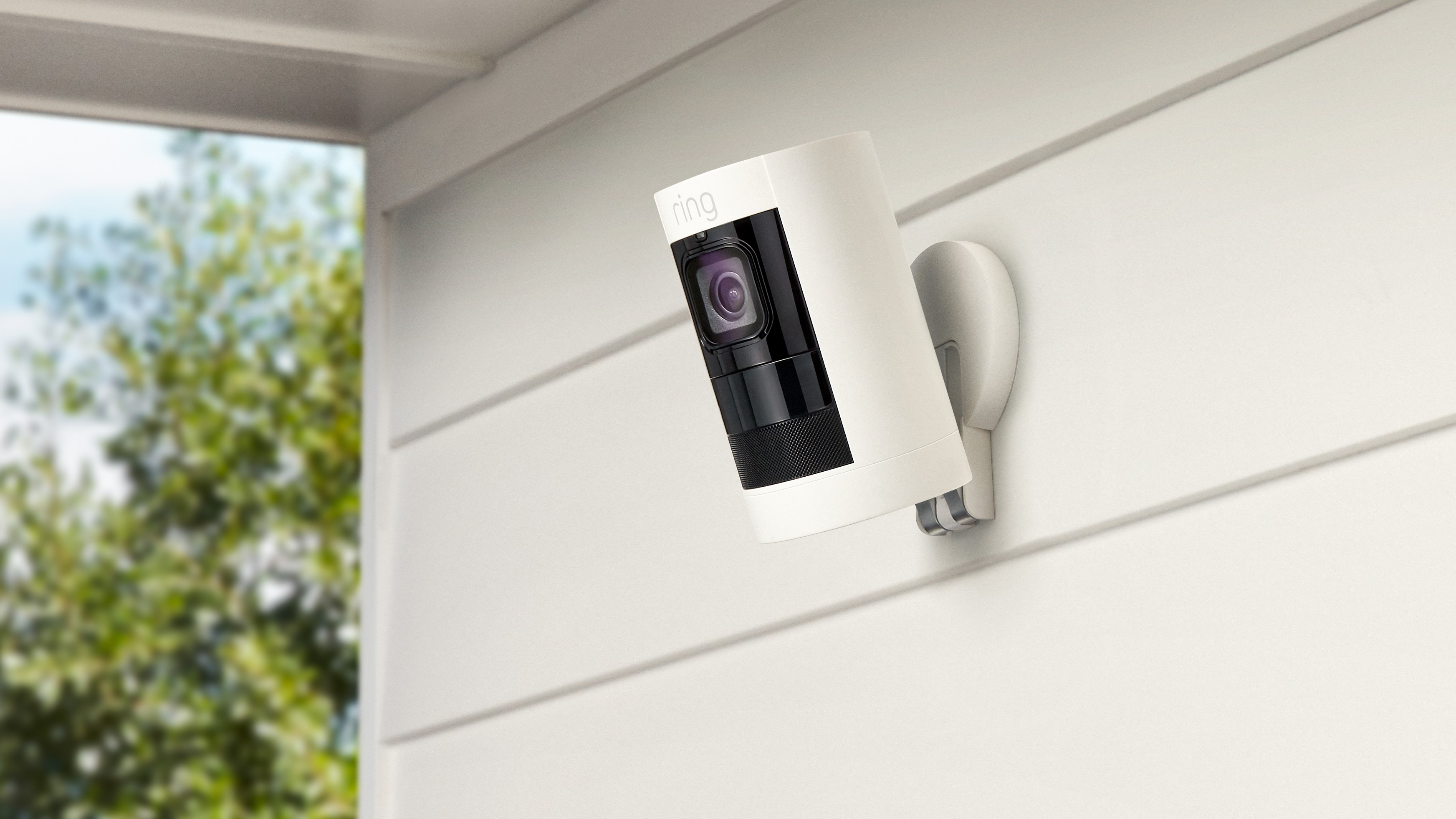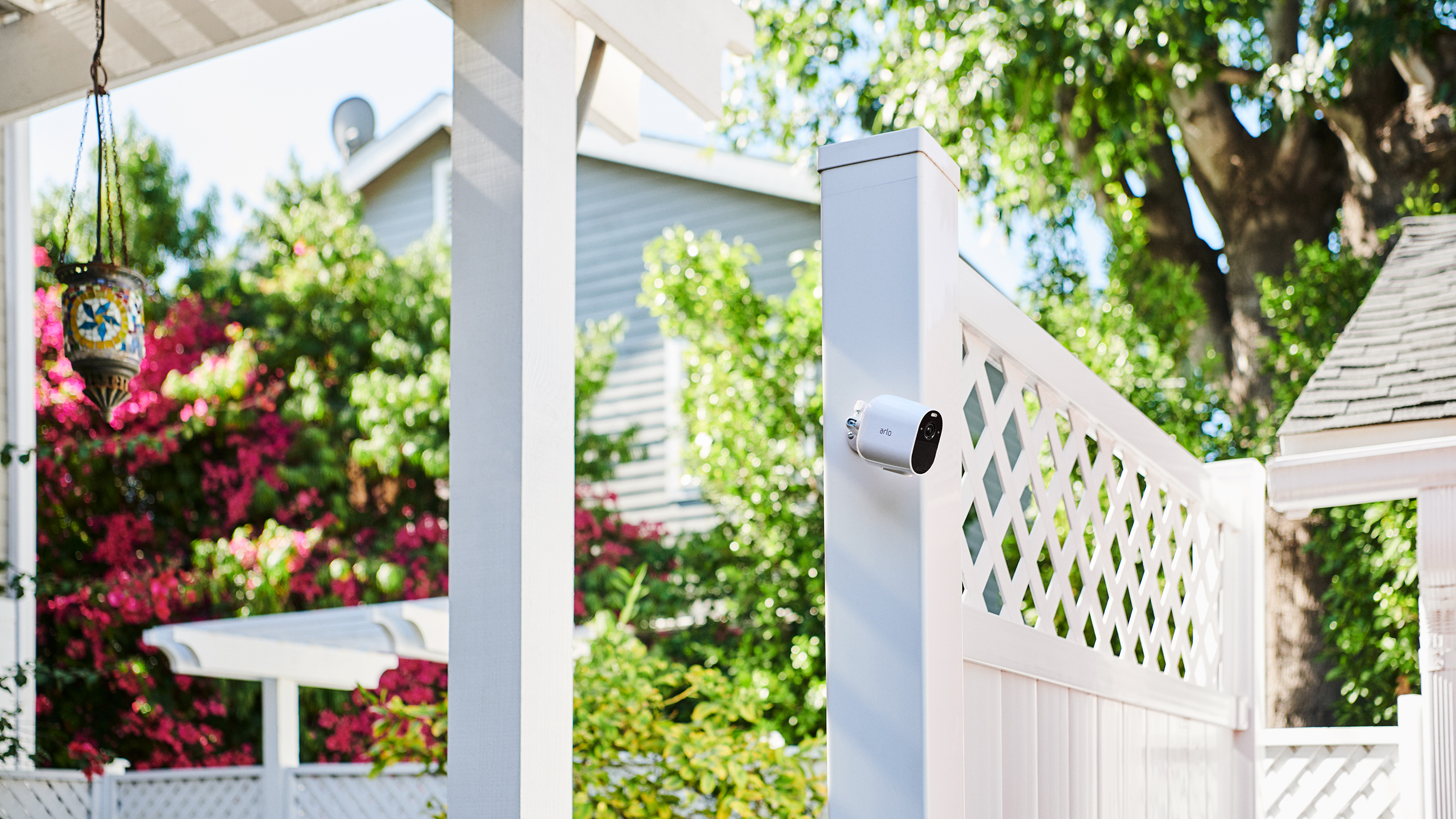Ring vs Arlo: which home security camera system is best for you?
Should you choose Ring or Arlo to keep an eye on your home?

Video resolution: 1920x1080p (full HD)
Field-of-view: 140-degree
Lumens: 2000
Power: Wired
This is the brands premium floodlight camera which features things like Live View, 3D Motion Detection and Two-Way Talk with Audio + over the Floodlight Cam Wired Plus. It's simple to use, records in clear video and comes with built-in LEDs and a siren. But, you'll have to sign up to Ring Protect to unlock cloud storage and to continue benefiting from the features. You'll also need to have an electrical socket nearby to wire it in to.
Pros
- Sleek design
- Clear video quality
- 2 x 1,000 lumen spotlights
Cons
- No free video storage
- No Google Assistant or HomeKit support

Video resolution: 2,048x1080p (2k)
Field-of-view: 160-degree
Lumens: 3000
Power: Battery
This is the only floodlight camera from Arlo and it claims to be the worlds first wireless floodlight camera that illuminates up to 7-metres of your property. The set-up is easy, the app is intuitive and it works with Alexa, as well as HomeKit and Google Assistant. But, when the 90 day free Arlo Secure Subscription trial ends you'll need to subscribe to benefit from all the features.
Pros
- 2K image quality
- Six-month battery life
- Arlo app works well
Cons
- Cloud data subscription (after 90 days)
- Not as good as 4K
If you've heard of Ring, and heard of Arlo, but not sure which brand if going to offer the best home security cameras for you, our head-to-head, Ring vs Arlo, is going to be a sure-fire way of getting just what you need and want around the home.
Ring and Arlo are two of the market leaders in smart home security, and both are based in America but sell worldwide. Arlo is a spin-off from networking giant Netgear and became a fully independent company in 2018; Ring started off as a smart doorbell firm called Doorbot – early supporters included Shaquille O'Neal – and was acquired by Amazon, also in 2018. Since then both firms have become key players in a market estimated to be worth $5 billion by 2025; another key player is another Amazon brand, Blink, which aims at the budget end of the market.
As we expected, Amazon announced some new Ring devices at this year's annual Amazon event in late September. The Ring Spotlight Cam Plus Battery is a wireless outdoor security camera with 1080p HD video, two-way audio, motion-activated spotlights, customisable motion zones and color night vision. The Ring Spotlight Cam Pro Battery is similar but also has aerial mapping, 3D motion detection and dual-band Wi-Fi for even better range.
So which brand is the better buy when it comes to smart home security? In this guide we'll show you the key differences between the two firms' technologies and key products to help you find the perfect smart security system for your home.
Ring vs Arlo: key differences
- Arlo works with Alexa, Apple HomeKit and Google Assistant, whereas Ring is only compatible with Alexa
- Arlo have a 90-day subscription trial, whereas Ring have a 30-day subscription trial
- Standard features such two-way talk, live view and instant notifications are available out the box and free for all Ring products - even once the trial period has ended.
Once the trial period ends on Arlo products, you'll need to subscribe to Arlo Secure to continue to use it
Ring vs Arlo: key similarities
- Both have an extensive range of security cameras and video doorbells, although Ring have the upper hand
- Wired and battery-powered options are available
- You can build out your home security system with each of the products in the range
- Both brands offer their products in black and white colorways

Ring vs Arlo: Range
When it comes to the number of different cameras and best video doorbells available from Ring and Arlo, both brands offer plenty of choices. So buckle up, and we'll give you an overview of what's available - spoiler alert, the selection is vast.
Removable rechargeable batteries power Arlo's top-of-the-range home security cameras. They are weather-proof, so they can be used indoors or outside, although most require a base station. This sits inside your home, connects to the internet over Ethernet, and provides a dedicated Wi-Fi network for the cameras.
The Arlo Pro 2 records in color Full HD during the day and black-and-white Full HD video at night, while the Arlo Pro 3 has a resolution of 2K and a built-in spotlight for color footage both during the day and at night.
The Arlo Pro 3 Floodlight also acts as a security light to illuminate when motion is detected and record footage.
Sign up for breaking news, reviews, opinion, top tech deals, and more.
The Arlo Pro 4 offers all the benefits of the Arlo Pro but doesn't require a base station to connect to Wi-Fi.
The Arlo Ultra records in 4K and has the same spotlight as the Arlo Pro 3 and 4, while the Arlo Ultra 2 builds on this with both 2.4GHz and 5GHz Wi-Fi and an increased range, which should reduce connectivity issues.
You're still with us, right? Good, because we're not finished just yet. Arlo also offers three cameras in its Essential range, a more affordable range of FullHD cameras that don't require a base station.
The Arlo Essential Spotlight and Arlo Essential XL Spotlight are battery-powered (the XL version lasts up to one year between charges compared to the sim months offered by the Essential Spotlight) and can be used indoors or outside.
The Essentials indoor camera is an affordable wired device designed for inside the home and comes with a privacy shutter to offer peace of mind to those that worry their every move is being watched. On top of that, the Arlo Go is a Full HD battery-powered security camera that connects to mobile data rather than Wi-Fi - making it good for areas your home network doesn't reach.
Arlo also has two video doorbells that record footage in a resolution of 1536p and a 1:1 aspect ratio so you can see the full length of someone on your doorstep - the only difference between the two is the way they are powered; the Arlo Video Doorbell is wired, while the Arlo Essential Video Doorbell Wire-Free uses a rechargeable battery.

Ring launched as a video doorbell maker, so its range of doorbells is understandably wider than its line of home security cameras.
Ring offers five video doorbells in total; the Ring Elite (a professionally-installed wired doorbell that uses Ethernet rather than Wi-Fi) and the Ring Video Doorbell Pro 2, which is mains powered and records FullHD video in a 1:1 aspect that’s identical to Arlo’s video doorbells… but doesn’t actually need to be professionally installed.
These are joined by the new Ring Video Doorbell 4, which can be battery operated or mains powered. It records in Color Full HD but doesn’t have the 1:1 aspect ratio of the Video Doorbell Pro 2.
The Ring Video Doorbell (2nd generation) brings a slightly narrower field of view than the Video Doorbell 4, so you won’t be able to see as much of the image from the camera, and the battery is built-in rather than removable - meaning you have to remove the doorbell altogether to charge it. Finally, Ring’s most affordable option is the Ring Video Doorbell Wired - a hard-wired version of the Ring Video Doorbell (2nd generation).
If you’re looking for a bargain, the Ring Video Doorbell Pro and Ring Video Doorbell 3 are predecessors to two of the current Ring Video Doorbells and are currently still available - although stocks won’t last forever.
In terms of security cameras, Ring offers the entry-level Indoor Cam, which is mains powered, records in color Full HD, and comes with a 140-degree field of view.
Next is the Stick Up Cam, which comes in battery- or mains-powered versions and can be used indoors and outside.
Again it records in color Full HD with the same field of view, and it also has a flexible mount so it can be positioned at different angles and even mounted from the ceiling.
Ring Spotlight Cam is another outdoor security camera that takes the Stick Up Cam’s spotlight and uses it to illuminate when motion is detected. At the same time, the Ring Floodlight Cam has two 1,000-lumen floodlights (the average ceiling light is around 800 lumens) instead of a single spotlight.
The newer Ring Floodlight Cam Pro is also available to pre-order. It builds on its predecessor with a sleeker look, and some handy laser-based motion detection features also found on the Ring Video Doorbell Pro 2 that should help reduce unwanted activity alerts.
Ring also offers something Arlo doesn’t - a smart alarm system that includes door/window sensors, motion-detection PIRs, and even an optional outdoor siren and an assisted monitoring that will automatically call three emergency contacts if the alarm is triggered.

Ring vs Arlo: Price
So, how much will you have to lay out for this plethora of home security devices? Ring's cameras are slightly more affordable than Arlo's offering.
Its cheapest home security camera is the Ring Indoor Cam, which costs $59.99 / £49 / AU$99, while you can pick up an outdoor camera, the Ring Stick-up cam, for $99.99 / £89 / AU$179.
Its latest wired video doorbell, the Ring Video Doorbell Pro 2, will set you back $249.99 / £219 / AU$399.99, and its current battery-powered video doorbell, the Ring Video Doorbell 4, is priced at $199.99 / £179 / AU$329.
When it comes to Arlo, its most affordable security camera is the Arlo Essential Indoor Camera, which will cost you $99 / £119.99 (around AU$180, although it's not currently available in Australia), while weatherproof cameras that can be used outside start from $99 / £119.99 / AU$229 for the Arlo Essential Spotlight camera.
Meanwhile, the wired doorbell is priced at $149.99 / £179.99/ AU$289.99, while the battery-operated version, which is identical in everything apart from the way it's powered, is priced at $199.99 / £179.99 / AU$329.
All of these home security cameras and video doorbells are often discounted during the year, too, for example, on Black Friday. We saw the Ring Video Doorbell Pro drop as low as $139 / £119 / AU$175 from its list price of $169 / £219 / AU$399.
Similarly, the Arlo Ultra two-camera kit has been discounted to almost half price - taking it as low as $440 / £309 / AU$699.

Ring vs Arlo: Subscription cost
To get the most out of both security cameras systems, you will need to subscribe to the brand’s monthly plans; as these allow you to review footage recorded by the cameras and doorbells at a later date, as well as offer access to smart features that help reduce the number of unwanted notifications. If you choose not to subscribe, you’ll still get alerts about motion detected by the cameras, and you’ll be able to log in and view the live feed, but you won’t be able to store videos so you can view them after they’ve been recorded.
Arlo Smart costs $2.99 / £2.79 / AU$4.49 per month per camera if you want to store footage up to 2k. Alternatively, it’s priced at $9.99 / £8.99 / AU$14.99 per month for unlimited cameras. To store footage recorded in 4K costs $14.99 / £12.99 / AU$ 21.99 per month for unlimited cameras.
All options store video for up to 30 days and can identify whether the motion detected has been caused by a person, animal, or vehicle. A three-month free trial is included with most new cameras.
If you purchase some of Arlo’s older home security cameras, such as the original Arlo, Arlo Pro, or Arlo Pro 2, these include seven days of cloud recording free of charge. However, you will need the premium Arlo Smart service if you want to review the video for up to 30 days after it’s been recorded or want the source of the motion to be identified.
Ring Protect is similarly priced at $3 / £2.50 /AU$4 per month for one camera or $10 / £8 / AU$15 for an unlimited number of cameras and offers 30 days of video storage, as well as People Only mode that will reduce unwanted motion alerts, discounting those caused by animals or wind rustling through the trees.
Again, most new Ring devices come with a 30-day free trial of Ring Protect.

Ring vs Arlo: Video and audio
When it comes to the quality of the audio and video of the Ring and Arlo security cameras, they’re generally evenly matched.
We’ve reviewed the majority of the products offered by both brands, and in our tests, the video has always been clear and detailed, while the audio has always been extremely coherent.
There are a couple of reasons Arlo’s video and audio capture slightly trumps Ring in our eyes; one being that some cameras can record in 2K and 4K resolution.
These are ideal if you want to mount the camera at a high level to ensure it captures a wider area without losing details in the video.
The second is the inclusion of spotlights in several cameras to provide color footage at night and during the day - Ring only offers this on two of its cameras, and the design is pretty bulky. In contrast, Arlo retains the compact size while still including the light.

Ring vs Arlo: App
Both Ring and Arlo have apps that are simple to navigate and provide a way to view the camera and doorbell’s feed in real-time while reviewing footage previously captured, providing you have subscribed to the relevant monthly service.
Both platforms also provide rich notifications with a snapshot of an activity detected to your smartphone, too - so you can quickly see if it’s an alert you need to worry about or not.
The US Ring also offers the Neighbors feature through its app, which alerts you about crimes within 5 miles of your property.
It’s worth noting that all but two US states have their police and fire departments working with Ring and, through this feature, can request footage to use as part of their investigation.
Ring states that these departments can’t access live feeds or recordings automatically, it’s up to device owners if they decide to share the footage, and it won’t share personal information about the owner either. Still, it’s worth noting that you could have requests made if you open up the option.

Ring vs Arlo: Smart home integration
Both Arlo and Ring cameras and doorbells will integrate with voice assistants, so you can use the best smart speakers to converse with anyone in the camera’s field of view and see a live feed from the camera through the best smart displays.
Arlo is the clear favorite here, as all home security cameras and video doorbells integrate with Amazon Alexa and Google Assistant. At the same time, some of their devices also offer Apple HomeKit integration. Further support of Apple’s system is being rolled out in the future to some of the new products, such as the Arlo Video Doorbell.
Ring’s cameras and video doorbells are only compatible with Alexa, which isn’t surprising considering the company was purchased by Amazon in 2018. Ring devices will be an obvious choice if you’ve got Alexa inside your home.
Ring vs Arlo: Verdict
Our tests show that Ring and Arlo are both effective and easy-to-use home security camera systems. In addition, Ring has a more rounded security offering, thanks to the smart alarm and assisted monitoring service, which is good if you want an alarm system that ties into your cameras and video doorbells.
Meanwhile, Arlo offers more flexibility on where cameras can be positioned. Thanks to the combination of magnetic mounts and battery power, you can easily move their location in seconds. Arlo's products offer a higher resolution too.
Suppose you already have smart speakers or smart displays in your home. In that case, these will also play a part in deciding which brand to choose, as Ring is heavily integrated with Amazon Alexa. At the same time, Arlo works with both Alexa and Google Assistant, and some of their devices even come with HomeKit support.
Smart security: FAQ
What is a home security system? A home security system is a mix of security cameras and video doorbells on the exterior and sometimes inside your home. They let you see and speak to anyone in your property via an app on your smartphone or tablet.
How do you use it? You can view the camera’s live feed in real time through your smartphone or tablet. The built-in speaker and microphone also enable you to hear and speak to people and pets in your home.
As well as providing the ability to view a live feed whenever you like, a home security camera will also send an alert if it detects motion in your home, so you can respond as soon as you see it.
Do I need a subscription? You can use both the Arlo and Ring indoor cameras without a subscription, but you won’t be able to go back at a later date and view footage recorded by the camera.
The subscription service provides access to a secure area online where this video is stored. To get the most out of the home security camera, it’s worth paying for the subscription.

Carrie-Ann Skinner was formerly Homes Editor at TechRadar, and has more than two decades of experience in both online and print journalism, with 13 years of that spent covering all-things tech. Carrie specializes in smart home devices such as smart plugs and smart lights, as well as large and small appliances including vacuum cleaners, air fryers, stand mixers, and coffee machines. Carrie is now a copy editor at PWC.
- Jennifer OksienEditor, Top Ten Reviews